Försäkringsbolaget Atlantica har med stort intresse följt händelseutvecklingen kring brandbåten ”Fenix 139” som Storstockholms Brandförsvar, av ekonomiska skäl tvingas att lägga i malpåse. Detta skulle innebära att Sveriges huvudstad, liksom innerskärgården runt Stockholm, inte kommer att ha tillgång till en båt med brandspruta som kan släcka direkt från vattnet.
Som försäkringsbolag med 55 000 båtägare som försäkringstagare, varav många finns i Stockholmsområdet, känner Atlantica en viss oro. Främst naturligtvis för människors säkerhet men även att det blir svårare att rädda så mycket som möjligt av de båtar som börjar brinna.
Conny Landström, Affärsområdeschef Atlantica:
– Vi tycker det är mycket olyckligt att Sveriges största stad, byggd runt vatten och med tusentals båtar, ska stå utan en riktig brandbåt med spruta. Vi försäkrar brandbåten Fenix 139 idag och har beslutat att vi avstår från försäkringspremien om det kan leda till att Storstockholms Brandförsvars ledning tänker om i denna fråga. Vi har förståelse för att man ibland måste göra nedskärningar men vi hoppas att Storstockholms Brandförsvar och politiker värderar säkerheten högre och låter brandbåten vid Slussen vara kvar.
92 båtar kom till start i den inledande delseglingen vid VM i Starbåt, på Kattegatt utanför Varberg och lyckades på en perfekt startlinje komma iväg redan i första startförsöket i en stadig ostsydostlig bris på 4-7 m/s.
Redan på första kryssen skedde en klar separering av fältet beroende på variation i den nordgående strömmen och bäst lyckades här slutsegrarna, fjolårets världsmästare, polackerna Kusznierewicz/ Zycki vilka hade en liten ledning redan vid första rundningsmärket.
Hemmafavoriterna Fredrik Lööf/ Johan Tillander låg här först på fjortonde plats men lyckades på första länsen segla upp sig till som fyra, efter italienarna Marazzi/de Maria och Santoni/ Toccoli. De ledande polackerna drog här klart ifrån övriga och tog en säker ledning i fältet.
På andra kryssbenet gick sedan Lööf/ Tillander upp till en klar andraplats efter polackerna, vilka höll ledningen hela seglingen igenom, även om svenskarna närmade sig under kryssarna men tappade något på undanvindarna. Kusznierewicz/ Zycki hade dock inga problem att hålla svenskarna bakom sig och tog en ohotad seger efter runt 2,5 timmas segling.
Bäst bland övriga svenskar lyckades Johansson/ Möller med en tionde och Dahlén/Carlsson på trettonde plats bland de 85 besättningar som fullföljde seglingen.
Starbåts- VM fortsätter under veckan med en segling varje dag t.o.m. fredag med lördag och söndag som reservdagar.
Foto: Oskar Kihlborg.
Rupert Marine AB i Täby bygger på två stycken 50 fots RIB som ska levereras till en professionell kund. Båtarna ska främst användas till dykeri och sjömätningsarbeten till havs. Båtarna är på 15×3,99 m och har en total motoreffekt på 1 100 hk per båt.
Båtarna har styrhytt med plats för 4–8 sittande och arbetsutrymmen med mera i en främre kabin samt 4 kojer.
För framdrivningen står tre stycken Volvo Penta D6-370 utrustade med DPH-drev. Styrhytten är monterad på gummikuddar för att ge låg ljudnivå och minska vibrationerna. Båten kan även utrustas med vattenjet om någon kund vill ha det.
Länk: www.rupertmarine.com
2009-08-02, kl. 13:06 Fartyget Langeland som förliste i södra Kosterfjorden i fredags har nu identifierats. Kustbevakningen kunde strax efter klockan 13.00 vid en undersökning av området med en så kallad ROV, en fjärrstyrd undervattensfarkost utrustad med filmkamera och gripklo, identifiera det förlista fartyget.
Kustbevakningens miljöskyddsfartyg KBV 051 bistår sedan i går kväll norska Kystverket i arbetet med att ta upp olja i Langesund, där det havererade fartyget M/V Full City fortfarande läcker olja från läckande bunkertankar.
Ombord på M/V Full City fanns från början cirka 1100 ton olja och det är okänt hur mycket som kommit ut. Haveristen har hål i alla oljetankar, i något lastrum och i maskinrummet.
Bilden:
Haveristen M/V Full City i Langesund, Norge. Foto: Kustbevakningen.
Länk: www.kustbevakningen.se
Inom de närmsta veckorna kommer flygplan att cirkla över Sävarfjärden i Sverige och Rönnskären i Finland. Det är projektet ULTRA – Utveckling av Lidar-baserad terränganalys för regional användning – som nyttjar laserteknik för att göra detaljerade kartor över havsbottnen.
– Det ökande exploateringstrycket på havsområden gör att det finns ett stort behov av detaljerade undervattens kartor, såväl ekonomiska projekt som samhällelig planering försenas kontinuerligt p. g. a. bristande information om havsområdena. Kartorna är ovärderliga när det gäller t.ex. placering av vindkraft och broar, planering av farleder och marinor, säger projektledare Michael Haldin.
Flygplanet som används innehåller hypermodern utrustning som skannar havsbottnen genom att skjuta laserpulser och mäta det reflekterade ljuset. Tekniken har tidigare använts på land för att göra noggranna topografiska kartor och har under de senaste åren utvecklats för att producera djupkartor över havsområden och andra vattendrag.
– Metoden kan liknas med ekolodning från båt, men genom att nyttja ett flygplan kan stora områden karteras betydligt snabbare och med stor upplösning. Tekniken har speciellt stor betydelse för kartläggning av grunda skärgårdar och sjöar, där traditionell ekolodning från båt är svår och dyr att genomföra, säger Michael Haldin.
Djupkarta med bottens beskaffenhet
ULTRA-projektet, som bekostas av Interreg IVA-programmet Botnia-Atlantica och leds av Forststyrelsen i Vasa och Länsstyrelsen i Västerbotten, har som mål att vidareutveckla laserkateringstekniken. Samtidigt med flygningen karteras områdena också noggrant genom dykning och med hjälp av undervattenskameror.
– Genom att med avancerad datoranalys jämföra den reflekterade laserpulsens egenskaper med fältobservationer från havsbottnen strävar vi efter att få fram havsbottnens beskaffenhet och förekomsten av undervattensväxtlighet, förutom en noggrann djupkarta, berättar Johnny Berglund projektansvarig på Länsstyrelsen Västerbotten.
Många intressenter i projektet
Projektet är innovativt och bygger på att sammanföra spetskunskap från Sverige och Finland. I projektet deltar ett tiotal förvaltnings- och forskningsorgan samt ett antal specialistföretag. Från svenska sidan deltar förutom Länsstyrelsen i Västerbotten också t.ex. FOI, som kommer att utföra laserpulsanalyserna, och AquaBiota, som kommer att göra modellering av undervattensmiljön. Umeå kommun skall utvärdera kartornas användbarhet och Naturvårdsverket stöder projektet finansiellt. Från Finland deltar bl.a. Österbottens förbund, som ansvarar för regional planering, och Vilt- och fiskeriforskningsinstitutet, med ansvar för fiskstammar, lekområden och sälfrågor.
Sävarfjärden i Sverige och Rönnskären i Finland ingår i projektet och fältundersökningarna pågår som bäst. Själva Lidar-flygningarna sker i början av augusti, beroende av väderlek och siktdjup.
Det kunde inte varit bättre förhållande när SM veckan för seglarna avgjordes i Malmö. Publiken fick se medaljracen avgöras i 10-14 m/s strax utanför Västra Hamnen i Malmö.
– SM vevkan har varit en succé för seglingen. När RF och SVT presenterade konceptet med ett samlat SM för alla idrotter tog vi chansen att tänka till lite extra för att göra sporten tydligare mot såväl egna som de som inte stött på sporten tidigare. En av de största nyheterna var medaljfinaler mellan de tre främsta i alla klasser, säger svenska seglarförbundets sportchef Stefan Rahm
Finalracen avgjordes i mycket stark vind, starkare än man normalt seglar i men de tre bästa från varje klass behärskade situationen på ett ypperligt sätt och fick publiken att jubla.
Mest jubel fick den endast 15 årige Adam Holm i Kona klassen. Adam tog sig till final genom att segla alldeles lysande i grundseglingarna och kommer att bli en stor stjärna om han fortsätter utvecklas på detta sätt. I finalen fick han dock se sig besegrad av Ulf Antonsson som vann och av sin egen pappa Björn Holm.
Bästa klubb blev KSSS mycket tack vare segrarna av Anton Dahlberg/Sebastian Östling i 470 herr och Jesper Stålheim i Laser.
Resultat
Segrar korades i fem kategorier; bräda, enmansjolle, tvåmansjolle, flerskrov och kölbåt.
Kona – Bräda
1. Ulf Antonsson VASS
2. Björn Holm KSSS
3. Adam Holm KSSS
Laser Radial – Enmansjolle dam –
1. Cathrine M. Gjerpen, KNS, NOR
2. Sara Sigvardsdotter, GKSS
3. Matilda Salminen, SS Pinhättan
Laser – Enmansjolle herr
1. Jesper Stålheim, KSSS
2. Johan Wigforss, GKSS
3. Kristian Ruth, Asker Seilforening NOR
470 dam – tvåmansjolle dam
1. Lisa Ericson/Astrid Gabrielsson, GKSS
2. Ingrid Söderström/Linnea Wennergren, GKSS
3. Karin Söderström/Martina Söderbom, GKSS
470 herr – tvåmansjolle herr
1. Anton Dahlberg/Sebastian Östling, KSSS
2. Victor Bergstrom Marcus Dackhammar, GKSS
3. Filip Bolmgren/Emil Malmström, GKSS
F18 – flerskrov
1. Martin Strandberg/Johan Örtendahl, MSS
2. Pontus Johansson/Daniel Winberg, KSSS
3. Johan Gnosspelius/Roger Bodén, KSSS
CB66 – kölbåt
1. Carl P Sylvan/Håkan Abenius/Sara Engström, LESS
2. Fredrik Åstrand/Stefan Blom/Crister Sörvik, StSS
3. Niklas Stenum/Markus/Wallentin/Janne Drotz, SSVE
Tidigt på fredagsmorgonen förliste det norska fartyget Langeland med 6 mans besättning i vattnen söder om Kosteröarna. Sjöräddningscentralen har under dagen bedrivit efterforskningar med totalt 6 fartyg, 3 helikoptrar och 1 flygplan. Spaningarna har varit resultatlösa – det enda som funnits är vrakgods, livflottar och flytvästar.
Läs hela händelseförloppet på MRCC Online: http://www.sjofartsverket.se/templates/MRCCLogg____13676.aspx?Category=Alla&Status=1&Period=2 (kommer även att uppdateras under lördagen så länge sjöräddning pågår).
Klockan 6 på fredagsmorgonen emottog Sjöräddningscentralen ett telegram från satellitsystemet COSPAS/SARSAT, med innebörd att fartyget Langelands automatiska nödsändare aktiverats ca 05:46. Efter kontakt med det norska rederiet framkom att man ungefär samtidigt haft kontakt med fartyget, som då berättat att man fått lätt slagsida och sökte lä i det hårda vädret.
Faryget var på väg från Karlshamn till Moss med en last av sten. Besättningen på 6 man bestod av 4 ryssar och 2 ukrainare.
Sjöräddningscentralen larmade flyg/helikopter samt fartyg, som under dagen har genomsökt området mycket väl.
Det som har påträffats är livflottar, flytvästar samt vrakgods.
Söket har skett under mycket svåra förhållanden. Vindar runt 20 meter per sekund samt vågor på upp till 5 meter.
Efterforskningarna har avbrutits för kvällen. Under rådande omständigheter är det mest optimalt att låta personalen vila och återuppta söket under morgondagen – då även vädret kommer att vara bättre.
Under morgondagen kommer man att kunna söka på ställen, där det idag inte varit möjligt att söka pga väder. Man kan också se det så, att det i morgon kommer att vara möjligt att upptäcka saker som man idag inte sett pga dåliga förhållanden.
I morgon kommer vi även på allvar att försöka lokalisera fartyget.
Följ utvecklingen i detta ärende och alla andra sjöräddningsfall på Sjöräddningscentralens blogg – MRCC Online: http://www.sjofartsverket.se/mrcconline .
Sökandet efter överlevande efter fartyget Langeland, som förliste söder om Kosteröarna utanför Strömstad, har avslutats. Ett stort antal fartyg, helikoptrar och flygplan har genomsökt området utan att finna några överlevande. Fartyget har med största sannolikhet lokaliserats. Sjöräddningcentralen lämnar nu kl 14:55 över ansvaret till Polisen.
Det var strax före kl 06 på fredagsmorgonen, som det norskregistrerade handelsfartyget Langeland förliste söder om Kosteröarna, utanför Strömstad. Fartygets automatiska nödsändare (EPIRB) aktiverades. Signalerna uppfattades kl 0546 av en satellit och budskapet nådde Sjöräddningscentralen i Göteborg några minuter före kl 6. Fartyget hade själv varit i kontakt med rederiet i Norge, bara några minuter tidigare – man uppgav då att man fått lite slagsida och sökte skydd från det hårda vädret. Det blåste runt 20 meter per sekund och våghöjder på upp till 5 meter har rapporterats under insatsen. Fartyget på ca 2500 ton var på väg från Karlshamn till Moss, lastat med sten.
Besättningen bestod av 6 personer, 4 från Ryssland och 2 från Ukraina.
Under fredagen sökte totalt 6 räddningsbåtar från både Norge och Sverige i området:
– Rescue Gustav. B Thordén, SSRS Strömstad
– Rescue 12-29, SSRS Strömstad
– Rescue Maximat, SSRS Strömstad
– Rescue Horn Flyer, norska Sjöräddningssällskapet
– KBV 307, Kustbevakningen
– KBV 453, Kustbevakningen
Under fredagen deltog även flygande enheter:
– Räddningshelikopter Lifeguard 901
– Kustbevakningsflyget KBV 502
– Norska Räddningshelikoptern Saver 60
– Polishelikopter 942
Fredagens sökinsats var svår på grund av det rådande vädret. Det var svårt att upptäcka överlevande pga sjöhävning och allt vattenskum. Det var stundtals mycket påfrestande för båtbesättningarna, insatsen fick avbrytas under ett par timmar pga sjögången.
Under fredagen återfanns några livflottar, ett stort antal flytvästar och i övrigt en hel del vrakgods från Langeland. Dock lyckades man inte lokalisera fartyget, vilket skulle ske med hjälp av ekolod. Något sådant sök kunde inte genomföras pga det rådande vädret.
Under lördagen återupptogs sökandet med hjälp av:
– Räddningshelikopter Lifeguard 901
– Kustbevakningsflyget KBV 502
– Rescue Gustaf B. Thordén
– Rescue Maximat
– KBV 307
– KBV 051
– Fiskebåtarna Dagny och Carona
Kustbevakningsbåtarna och fiskarna lyckades lokalisera vad vi tror är vraket efter Langeland, på drygt 100 meters djup. På detta djup är en dykinsats inte möjlig. KBV 051 gjorde ett försök att svepa av sjöbotten med en sk släpsonar, men kvalieten blev för dålig. Istället togs beslut om att försöka sända ner en sk ROV (fjärrstyrd undervattensrobot med bl a kamera). Detta har dock inte kunnat ske pga vädret. Det kommer eventuellt att ske senare, efter det att Sjöräddningscentralen överlämnat ledningen för ärendet till Polisen.
Övriga enheter har sökt igenom i stort sett samma sökområden som under fredagen. Lördagens sök skedde under helt andra betingelser, och det skulle varit möjligt att upptäcka saker som man inte sett under fredagen. Några nya fynd av värde gjordes dock inte.
Eftersom området är synnerligen väl genomsökt, både från ytan och från luften – samt dessutom flera gånger – drar vi slutsatsen, att om det funnits överlevande på ytan, stränder eller öar, hade dessa nu kunnat lokaliseras. Därför gör vi nu den bedömningen, att allt hopp är ute att finna de 6 besättningsmännen i livet.
En dagbok över hela insatsen återfinns på Sjöräddningscentralens webbplats: http://www.sjofartsverket.se/templates/MRCCLogg____13676.aspx?Category=Alla&Status=1&Period=2 .
Det blev späckat av överraskningar när semifinal och final i VM i matchracing avgjordes i Lysekil idag. Sverige tog hem både VM-silver och VM-brons med ett femte VM-silver för Marie Björling, som såg sig slagen i tre raka matcher i finalen av dagens sensation Nicole Souter från Australien. Anna Kjellberg slog den forne världsmästarinnan Claire Leroy i två raka segrar i kampen om bronsplatsen.
Med klarblå himmel och frisk vind, 6-8 m/s, blev det tillslut drömförhållanden för den sista och avgörande dagen i VM i matchracing i Lysekil. Det bjöds på oerhörd spänning i mycket jämna och intensiva matcher. Tuffa slagdueller och precisa manövrar imponerade på de många åskådarna, som till och med kunde höra kommandoropen ombord på båtarna från åskådarklipporna.
Den unga australiskan Nicole Souter, rankad 8 i världen, gjorde storskräll både i semifinal och final och slog sina motståndare match efter match med perfekt segling genomgående under dagen. Souter har aldrig tidigare seglat i Lysekil och var definitivt inte bland finalfavoriterna när VM-tävlingarna inleddes i tisdags. Trots sina 25 år har Souter redan deltagit i tre tidigare VM men har aldrig lyckats ta en medalj.
– Vi har inte mycket erfarenhet av den här båttypen och vårt mål när vi kom hit var att placera oss topp sex. När vi mötte Claire Leroy i semifinal var oddsen mot oss. Ingen förväntade sig att vi skulle vinna och vi hade därför ingen press på oss. Vi var helt lugna och allt gick som det skulle, sa en överlycklig Nicole Souter, som förutom världsmästartiteln får ta emot 125 000 kr i prispengar med sin besättning. Souter gör en storsatsning till OS 2012 tillsammans med sin landsmaninna Katie Spithill.
Veteranen Marie Björling har haft ett två år långt uppehåll och ingen av motståndarna förväntade sig en så stabil insats från den forne världsettan. Men Björling, som redan har fyra tidigare VM-silver och en mycket erfaren besättning, var trots sin bedrift lite besviken när hon kom i land som världstvåa.
– Det är svårt att vara glad när man just blivit slagen i tre matcher på raken. Men vi är självklart ändå nöjda med tanke på att ha kommit från ett tvåårigt uppehåll. Med den korta träning vi har lyckats få in sedan vi gjorde vår första tävling i maj och att det var så hög klass på alla deltagarna i år gör ju att vi känner oss extra nöjda, sade Marie Björling, som kommer att ta ett rejält kliv upp på världsrankinglistan efter sin imponerande insats (nu rankad 43!).
En av dagens många överraskningar var den svårslagne fransyskan Claire Leroys resultat. Leroy toppade grundomgången men hamnade utanför prispallen när Anna Kjellberg slog fransyskan i två raka segrar i kampen om bronsplatsen.
I båda semifinalerna blev resultatet 3-1; till Nicole Souter mot Claire Leroy och till Marie Björling mot Anna Kjellberg.
Slutresultat VM i matchracing
(med Internationella Seglarförbundets ISAFs världsranking i parentes):
1. Nicole Souter (8) AUS
2. Marie Björling (43) SWE
3. Anna Kjellberg (10) SWE
4. Claire Leroy (1) FRA
5. Katie Spithill (2) AUS
6. Camille Ulrikkeholm (13) DEN
7. Sally Barkow (7) USA
8. Lotte Meldgaard Pedersen (5) DEN
9. Lucy Macgregor (3) GBR
10. Linda Rahm (4) SWE
11. Silke Hahlbrock (6) GER
12. Christelle Philippe (19) FRA
Länk: www.lysekilwomensmatch.se
Foto: Dan Ljungsvik.
I hårda vindar som kraftigt ökade mitt på dagen blev det fysisk segling som avslutade grundomgången i VM i matchracing idag. På grund av ett avbrott mitt under dagen, då vindarna nådde kulingstyrka, hann man inte med att påbörja kvartsfinalen som därmed inleds imorgon förmiddag. En av dem som kvalificerat sig för final är Anna Kjellberg (bilden).
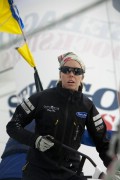 Det rann kaskader av vatten i storseglen när de sista matcherna i grundomgången seglades idag under eftermiddagen. Starka vindar, kraftiga vindvrid och bitvis hårt regn försvårade tävlingen för seglare, banläggare och tävlingsledning. Men det blev mycket action ute på banan och superb segling av världens bästa matchracingtjejer.
Det rann kaskader av vatten i storseglen när de sista matcherna i grundomgången seglades idag under eftermiddagen. Starka vindar, kraftiga vindvrid och bitvis hårt regn försvårade tävlingen för seglare, banläggare och tävlingsledning. Men det blev mycket action ute på banan och superb segling av världens bästa matchracingtjejer.
Redan igår var det klart att svenskorna Marie Björling och Anna Kjellberg samt fransyskan Claire Leroy är klara för kvartsfinal. Idag avgjordes de sista tre platserna i tuffa dueller i den starka vinden.
Australiskan Katie Spithill seglade aggressivt i de fysiska förhållanden och vann två av sina matcher idag och därmed är hon klar till kvartsfinal, vilket även gäller för Spithills landsmaninna Nicole Souter.
– Det är en stor fördel för oss att vara två australiska team som tränar ihop och pushar varandra. Vi har med en gemensam tränare och man kan nästan säga att vi är ett team av 12 istället för sex, sade Katie Spithill under kvällens presskonferens.
Bäst i grundomgången var den dubbla världsmästarinnan Claire Leroy som endast förlorade en match av 11, mot Marie Björling. Marie Björling och Anna Kjellberg ligger nära inpå fransyskan med nio segrar och två förluster för Björling och åtta segrar och tre förluster för Kjellberg.
– Vårt mål var att sluta topp fyra i grundomgången, därför är det en stor överraskning och glädje att toppa grundomgången. Till kvartsfinalen står dock allt på spel. Alla sex team som har gått vidare seglar riktigt bra, säger regerande världsmästarinnan Claire Leroy, som seglade med en helt ny besättningsmedlem idag efter att lagets fördäckare skadat handen i sista matchen igår. Den nya fördäckaren flögs in från Frankrike i natt, vilket inte verkar ha stoppat Leroy’s framgångar, med bara segrar idag.
I kvartsfinalen möter de sex deltagarna varandra en gång, precis som i grundomgången. Varje deltagare seglar därmed fem matcher. De fyra bästa går vidare till semifinal. Poängen från grundomgången räknas inte till kvartsfinal, då börjar tävlingen från noll igen.
Finalen avgörs på lördag då världsmästarinnan i matchracing 2009 koras.
Resultat VM i matchracing dag 3 – Grundomgången klar.
(med Internationella Seglarförbundets ISAFs världsranking i parentes):
Resultat av 11 seglade matcher i grundomgången
De sex bästa går vidare till kvartsfinal:
1. Claire Leroy (1) FRA 10-1
2. Marie Björling (43) SWE 9-2
3. Anna Kjellberg (10) SWE 8-3
4. Nicole Souter (8) AUS 6-5
5. Katie Spithill (2) AUS 6-5
6. Camille Ulrikkeholm (13) DEN 6-5
7. Lotte Meldgaard Pedersen (5) DEN 5-6
8. Sally Barkow (7) USA 5-6
9. Lucy Macgregor (3) GBR 5-6
10. Linda Rahm (4) SWE 4-7
11. Silke Hahlbrock (6) GER 2-9
12. Christelle Philippe (19) FRA 0-11
Länk: www.lysekilwomensmatch.se
Foto: Dan Ljungsvik.
För tre år sedan introducerade Volvo Penta fritidsbåtsbranschens första joystick, som kopplad till Volvo Pentas IPS-system gjorde det enklare och säkrare att lägga till med båten. I år introducerar Volvo Penta även joystick till motorer med drev.
 Även den mest erfarne båtägaren kan ibland känna olust inför att lägga till med båten i trånga hamnar och i stressande situationer.
Även den mest erfarne båtägaren kan ibland känna olust inför att lägga till med båten i trånga hamnar och i stressande situationer.
För båtar med Volvo Pentas revolutionerande IPS-system löste Volvo Penta problemet redan 2006 med sin sinnrika IPS Joystick. En innovation som båtägarna tog till sina hjärtan från första stund och idag utrustas med än 95 procent av IPS-båtarna med joystick.
I år breddar Volvo Penta joystickerbjudandet ytterligare genom att lansera en joystick för båtar med dubbla motorer med drev.
Den nya drevjoysticken bygger på det beprövade drevkonceptet och på individuellt styrda drev. Joysticken passar till diesel- och bensinmotorer med DPH eller DPS-drev. Joysticken utnyttjar kraften i motorerna för att förflytta båten. Inga bogpropellrar behövs.
Precis som med Volvo Penta IPS går det att ha upp till fyra joystickar ombord. De kan monteras vid de ordinarie styrplatserna, eller fristående ”Docking station” där de ger enklast tilläggning, till exempel på akterdäcket.
Elektronisk styrning
Precis som med Volvo Penta IPS bygger joystickfunktionen för drevmotorer på att dreven kan styras individuellt med elektronisk styrning. Den elektroniska styrningen kan ej eftermonteras – den är ett tillval som monteras direkt vid leverans.
Med elektronisk styrning får båtägaren dessutom andra fördelar: dreven ställs automatiskt i mittläge när motorn stängs av, styrningen är omedelbar och med perfekt respons.
Tillsammans med de elektroniska reglagen för gas och växel innebär det att inga reglagekablar
eller hydraulikledningar behöver dras. Som tillbehör går det också att koppla in en integrerad autopilot som tack vare att den arbetar direkt in i den elektroniska styrningen varken behöver extra servo eller underhåll. Autopiloter för Volvo Pentas elektroniska styrning finns från flera av de ledande tillverkarna.
Enkel manövrering
Den som inte haft möjlighet att testa manövrering med joystick har svårt att föreställa sig hur enkelt det verkligen är. Föraren för bara joysticken åt det håll han eller hon vill att båten skall förflytta sig. Vrid på joysticken och båten vrider sig runt sin egen axel. Tryck på knappen för högre effekt och du får extra kraft om det är strömt eller blåsigt. Till skillnad från bog- och akterpropellrar kan joysticken användas utan avbrott så länge det finns bränsle till motorerna. Inga extra batteribankar behövs heller.
Den nya dieseln Volvo Penta D3 är här – kompakt och fulladdad med toppmodern motorteknologi. Den finns i fyra effektklasser från 140 till 220 hk och är snabbare, starkare, renare, tystare än föregångaren. Och nu finns den även med joystick. Nya Volvo Penta D3 är fullmatad med den mest avancerade motorteknologi som finns tillgänglig på marknaden idag. Denna motor lanseras även i två versioner för segelbåtar, på 110 och 150 hk, och som inombordare.
 Nya D3 är en helt ny motor. Liksom föregångaren så kommer basmotorn från Volvo Personvagnar och den bygger på ett 2,4-liters, femcylindrigt motorblock i aluminium och med den allra senaste inom motorteknologin.
Nya D3 är en helt ny motor. Liksom föregångaren så kommer basmotorn från Volvo Personvagnar och den bygger på ett 2,4-liters, femcylindrigt motorblock i aluminium och med den allra senaste inom motorteknologin.
Nya D3 har common-rail med 1800 bars tryck och piezo-elektriska insprutare som möjliggör multipla insprutningar vid varje arbetstakt och därmed ännu mer exakt bränslemängd.
Den avancerade och mycket effektiva “cross-flow”-kylningen håller jämn motortemperatur. Turbo med variabel geometri gör att motorn får effektiv laddning redan från mycket låga varvtal upp till maxvarv. Det ger kraftfullt vridmoment för snabb acceleration upp i planing och hög toppfart.
Allt övervakas och styrs elektroniskt med ännu högre precision än tidigare.
Sammantaget ger detta nya D3 imponerande sportprestanda jämfört med föregångaren, som redan den var bäst i klassen. Motoreffekten har ökat från 190 till 220 hk, samtidigt som bränsleförbrukningen är lägre, liksom ljud och emissioner. Nya D3 har emissionsvärden i linje med de mycket skarpa lagkraven för amerikanska EPA steg 3, som träder i kraft först år 2012.
Elektronisk gas och växel
Nya D3 är i standardutförande utrustad med Volvo Pentas elektroniska plattform, EVC. Här ingår bland annat elektronisk gas och växel hela vägen från reglage till motor och drev. För båtägaren innebär det mjukare, exaktare och säkra körning samt inget behov av efterjusteringar.
Eftersom elektroniska kablar inte leder motorvibrationer, så ökar även komforten ombord.
EVC gör det också enkelt att installera extra tillbehör och funktioner, till exempel automatiskt drevtrim, färddator, motordata i plotter via NMEA. Eller den nya 7-tumsdisplayen i färg.
Med EVC går det att ha instrumentering, eller kompletta styrplatser, på upp till fyra platser ombord.
Joystick
För båtar med dubbelinstallation och som utrustats med elektronisk styrning finns även den oerhört uppskattade joystickfunktionen som tillval. Med hjälp av denna blir det avsevärt enklare att lägga till med båten och att manövrera i trånga hamnar.
Tyst och vibrationsfritt
Tack vare Common rail och multi-insprutningen har nya D3 mycket lågt motorljud. Den nya och modernt designade motorkåpan hjälper till att sänka ljudet ytterligare. Nya D3 har också fått samma typ av högdämpande motorfästen som de större D4 och D6 har, vilket ökar komforten ytterligare.
Singel- eller Duoprop
140- och 170-hästarsmodellerna finns med singelpropellerdrevet SX eller DPS Duoprop. 200- och 220-hästarsmodellerna finns med DPS Duoprop. Båda dessa drev är mycket moderna och lanserades för bara två år sedan.
Propellrarna till DPS finns nu i en helt ny modell. Den nya I-seriens blad har en patenterad utformning som ger mycket hög effektivitet. Propellrarna är tillverkade i höghållfast aluminium som pressgjutits under extremt tryck. Resultatet är propellrar med blad som är tunna, men ändå starka. Prestandan är i klass med propellrar av rostfritt stål.
Tekniska data
Beteckning: D3-140 D3-170 D3-200 D3-220
Konfiguration: Rak femcylindrig diesel med common rail
och turbo med variabel geometri.
Cylindervolym: 2,4 liter
Vikt, inkl DPS-drev: 353 kg
Max effekt hk/v/min: 140/4000 170/4000 200/4000 220/4000
Drev: SX / DPS SX / DPS DPS DPS
Emissioner: Uppfyller EU RCD samt US EPA steg 2.
Förberedd för att möta EPA steg 3 som införs år 2012.
Segelbåtsmotorer
Inombordsmotorn D3 har sedan 2003 funnits i en specialversion för segelbåtar samt deplacerande och halvplanande motorbåtar. Nu lanserar Volvo Penta en helt ny motor för denna typ av båtar.
Nya D3 bygger på ett nyutvecklat 2,4-liters, femcylindrigt motorblock i aluminium och den innehåller avancerad teknologi som möjliggör helt ny standard i marinbranschen när det gäller prestanda, miljö och komfort.
Common rail med 1800 bars tryck och piezo-elektriska insprutare ger multipla insprutningar vid varje arbetstakt, vilket innebär att bränslemängden kan doseras ännu mer exakt. Den avancerade och effektiva “cross-flow”-kylningen håller motortemperaturen jämn.
Turbo med variabel geometri gör att motorn får effektiv laddning från mycket låga varvtal upp till maxvarv. Det ger kraftfullt vridmoment för manövrering och ordentlig effekt för hög marschfart.
Tekniska data
Beteckning: D3-110 D3-150
Konfiguration: Rak femcylindrig diesel med common rail
och turbo med variabel geometri.
Cylindervolym: 2,4 liter
Vikt, exkl. backslag: 250 kg
Max effekt hk/v/min: 110/ 3000 150/3000
Emissioner: Uppfyller EU RCD samt US EPA steg 2.
Förberedd för att möta EPA steg 3 som införs år 2012.
Inombordare
Volvo Pentas nya generation av inombordsmotorn D3 är minst sagt flexibel. Den finns i inte mindre än fem versioner från 110 till 220 hk, där de två lägsta effekterna
är lågvarvsmotorer för icke planande båtar. Elektronisk gas och växel samt ännu lägre nivåer av emissioner, ljud och vibrationer tillhör nyheterna.
Tekniska data
Beteckning: D3-110 D3-150 D3-170 D3-200 D3-220
Konfiguration: Rak femcylindrig diesel med common rail
och turbo med variabel geometri.
Cylindervolym: 2,4 liter
Max effekt hk/v/min: 110/3000 150/3000 170/4000 200/4000 220/4000
Emissioner: Uppfyller EU RCD samt US EPA steg 2.
Förberedd för att möta EPA steg 3 som införs år 2012.
Kommentarer
Bravo Volvo! Vilka Duktiga motoringengörer ni har.
VP D3 i "blåsväder"
http://www.maringuiden.se/forum/;thread=426322
Hannes Bohinc och Giancarlo Cangiano har avslutat testkörningarna och förbereder sig på krabb sjö och tuffa race när de nur styr kosan mot Göteborg för den sjunde och åttonde rundan av Powerboat P1 World Championship i premiären för Scandinavian Grand Prix of the Sea: Havets Grand Prix.
– Det säger sig självt att vi kommer att köra för seger, men det är vi ju inte ensamma om så det kommer att bli en extremt tävlingsinriktad helg, förklarar österrikaren Hannes Bohinc.
– Vi förväntar oss svårare förhållanden än de vi mött tidigare i år men både båten och Giancarlo och jag har redan tidigare visat att vi kan prestera även i hårt väder så vi har all anledning att se fram mot tävlingarna med tillförsikt.
De båda f.d. världsmästarna i P1 tar gemensamt plats i cockpit igen efter att SNAV OSG gjort en framgångsrik prestation i Italien med italienske teamägaren och “throttleman” (gasaren) Cangiano och landsmannen och reservföraren Giovanni Carpitella. Det var en välbehövlig seger som placerade teamet på andra plats i Evolutionklassen efter ledaren Silverline. De förväntade extrema väderförhållandena nästa helg har föregåtts av tre Grand Prix på lugnt vatten där två av racen vunnits av SNAV OSG.
– Vi har gjort förbättringar på skrovet och har två nya propellrar som vi hoppas ska ge oss ett övertag, fortsätter Bohinc. Det är upp till oss att få bort poängskillnaden till Silverline och målet är att stå överst på ledartavlan när vi lämnar Sverige.
P1 Scandinavian Grand Prix of the Sea: Havets Grand Prix, äger rum på vattnen utanför Göteborg helgen 7 – 9 augusti.
Länk: www.HannesBohinc.com/p1
Tjörn Runt är den segeltävling där världsmästare och familjeseglare samsas på samma vatten och tävlar under samma förhållanden. 28 sjömil skall seglas och vi hoppas naturligtvis på en stabil vind. Första start går kl. 08:50 och därefter starter var 6:e minut.
2008 års vinnare Mats Johansson kommer att försvara sin titel. Med sina totalt två segrar i Tjörn Runt lockar naturligtvis en tredje. Bland de anmälda märks även 2008 års startgruppsvinnare Anders Hansen/Kracer 40R, Olof Zachrisson/Cumulus och Hans Oskarsson/Accent.
Även i år är det en fantastisk tillströmning av Expresser som har hela 25 anmälda båtar följt av IF (12 st.), Cumulus (12 st.) och H-båt (11 st.). Aspiranter på båttyper som kan nå 10 anmälda båtar och därmed tävla inbördes om eget pris är Maxi 77 (9 st.) och Fenix och Smaragd med 8 st. anmälda vardera.
För att informerar och inspirera seglarna hålls skepparträffar tillsammans med vår samarbetspartner Stenungsbaden Yacht Club den 14 augusti. Vid tre tillfällen under fredagskvällen kommer Harald Treutiger att lotsa seglarna mellan årets nyheter, tips och viktig information. Marinmeteorolog Lager Larsson ger detaljerade och lokala prognoser för vind och strömmar.
Länk: www.stss.se
Veteranen Marie Björling imponerade starkt när hon efter två års uppehåll visade på storform när VM i dammatchracing inleddes idag i Kyrkeviksbukten mitt i Lysekil. Björling vann fyra av fem seglade matcher och var den enda motståndare som slog världsettan Claire Leroy från Frankrike. Anna Kjellberg (bilden) har, liksom Claire Leroy, Camille Ulrikkeholm och Katie Spithill också segrat i fyra av fem seglade matcher.
Det var i perfekta seglingsförhållanden som VM i matchracing för damer inleddes i Lysekil idag. I friska sydvästliga vindar, 6-8 m/s, bjöd världens bästa matchracingseglerskor på actionfylld segling av absolut världsklass med tuffa manövrar där båtarna pressades till max. Under hela dagen var det jämna matcher och det är helt öppet vem som tar VM-guld i matchracing på lördag.
Marie Björling verkar snabbt ha hittat tillbaka till sin forna storform och seglade nästan felfritt. Hon tog tre raka segrar mot världstoppen imorse, då hon slog bland annat världsettan Claire Leroy från Frankrike och världstrean Lucy Macgregor från Storbritannien. Hon förlorade mot sin landsmaninna Anna Kjellberg som seglade en nästintill felfri match mot Björling.
– Vi har bra fart, gör bra manövrar och har fin taktik på banan, kommenterade en mycket nöjd Marie Björling, som har fyra tidigare VM-silver i medaljsamlingen.
25-årige Anna Kjellberg, som är rankad 10 på den officiella världsrankingen, hade också en stark VM-start med endast en förlust mot världsettan Claire Leroy.
VM i matchracing inleds med en grundomgång, där alla seglar en match mot alla motståndare. 12 lag deltar och alla seglar därmed 11 matcher i den första grundomgången (28 juli-30 juli). De sex deltagare med flest vunna matcher går vidare till ytterligare en omgång där alla möter alla, med andra ord fem matcher per lag (31 juli). De fyra bästa går vidare till semifinal och på lördag den 1 augusti koras världsmästarinnan i finalen mellan de två högst placerade teamen.
Resultat VM i matchracing efter första dagens seglingar (med Internationella Seglarförbundets ISAFs världsranking i parentes):
Efter 5 seglade matcher (totalt 11 ska seglas i grundomgången):
Marie Björling (43) SWE 4-1
Claire Leroy (1) FRA 4-1
Anna Kjellberg (10) SWE 4-1
Katie Spithill (2) AUS 4-1
Camilla Ulrikkeholm (13) DEN 4-1
Lotte Meldgaard Pedersen (5) DEN 3-2
Silke Hahlbrock (6) GER 2-3
Sally Barkow (7) USA 2-3
Lucy Macgregor (3) GBR 1-4
Linda Rahm (4) SWE 1-4
Nicole Souter (8) AUS 1-4
Christelle Philippe (19) FRA 0-5
ISAF Women’s Match Racing World Championship 2009 / Lysekil Women’s Match är med 50 000 Euro i prispengar världens största tävling i matchracingsegling för damer. I matchracing möts besättningarna två och två i spännande dueller som lätt kan förstås och följas av publiken.
Tolv av världens främsta kvinnliga matchracingskeppare deltar varje sommar i Lysekil Women’s Match, som arrangeras av Sailnet Lysekil AB i samarbete med Lysekils SS Gullmar.
Huvudsponsorer är Preem och Stena Bulk, med Carpe Diem Beds of Sweden, Concordia Maritime, Evidens och Sebago som partners samt Lysekils Kommun som värdstad.
Evenemanget arrangeras 27 juli-1 augusti.
Radiofrekvens Mix Megapol 94,6 direktsänder tävlingarna lokalt under hela evenemanget.
Länk: www.lysekilwomensmatch.se
Foto: Dan Ljungsvik.
Den första grundomgången när alla 12 deltagare möter alla en gång är nästan färdigseglad. Anna Kjellberg, som har seglat nio av sina 11 matcher, har gått från klarhet till klarhet. Hon vann alla sina matcher idag, vilket innebär att hon är klar för kvartsfinal som inleds imorgon eftermiddag. Även Marie Björling, som endast förlorade en av sina matcher idag är klar för kvartsfinal, där de sex bästa från grundomgången slåss om de fyra semifinalplatserna.
25-åriga Anna Kjellberg, som är rankad nummer 10 på internationella seglarförbundet ISAFs världsrankinglista, har haft en strålande start på VM-seglingarna i Lysekil. Av nio seglade matcher har hon endast förlorat en, det mot världsettan Claire Leroy från Frankrike. Hon har två matcher kvar i grundomgången som seglas imorgon förmiddag.
– Det är fantastiskt för oss svenskor att segla här i Lysekil. Vi har mycket support från nära och kära och alla åskådare på klipporna, vilket gör oss ännu mer taggade, sa Anna Kjellberg efter dagens framgångar.
Även Marie Björling har fortsatt att övertyga. Björling vann tre av fyra matcher idag och är därmed klar för kvartsfinal.
Fransyskan och regerande världsmästarinnan Claire Leroy seglar starkt och stabilt och har liksom Anna Kjellberg inte heller förlorat någon match idag men har seglat en match mindre. Hon har därför tre matcher kvar av grundomgången att segla i morgon.
Titelförsvararen i Lysekil, Linda Rahm, har haft en tuffare start i VM och har med sex förlorade matcher ingen möjlighet att gå vidare till kvartsfinal.
Fem lag slåss om de tre kvarvarande platserna till kvartsfinal. Det ser ljusast ut för de två danskorna Lotte Meldgaard Pedersen och Camille Ulrikkeholm. Danskorna är vana vid båttypen DS37 och har båda seglat en bra grundomgång. Australiskorna Katie Spithill och Nicole Sauter samt amerikanskan Sally Barkow har också chans att gå vidare.
Resultat VM i matchracing efter andra dagens seglingar (med Internationella Seglarförbundets ISAFs världsranking i parentes):
Efter 9 seglade matcher (totalt 11 ska seglas i grundomgången):
Anna Kjellberg (10) SWE 8-1 klar att gå vidare
Marie Björling (43) SWE 7-2 klar att gå vidare
Camilla Ulrikkeholm (13) DEN 5-4
Sally Barkow (7) USA 4-5
Nicole Souter (8) AUS 4-5
Christelle Philippe (19) FRA 0-9 går ej vidare
Efter 8 seglade matcher (totalt 11 ska seglas i grundomgången):
Claire Leroy (1) FRA 7-1 klar att gå vidare
Lotte Meldgaard Pedersen (5) DEN 5-3
Katie Spithill (2) AUS 4-4
Linda Rahm (4) SWE 2-6 går ej vidare
Silke Hahlbrock (6) GER 2-6 går ej vidare
Länk: www.lysekilwomensmatch.se
Foto: Dan Ljungsvik.
Ett mycket starkt startfält kommer till Karlskronas Internationella Dam-SM i Matchracingsegling. Fem av Sveriges främsta kvinnliga seglare får möta en världsmästarinna och två seglare i Danmarks internationella toppskikt i det nyinstiftade dammästerskapet i Matchracing i Karlskrona 12-14 augusti.
Sveriges just nu ledande kvinnliga matchracingseglare, Anna Kjellberg och Linda Rahm, ställs inför hårt svenskt och internationellt motstånd när den första Internationella Dam-SM-tävlingen ska seglas i Karlskrona 12-14 augusti.
Anna Kjellberg, 25, GKSS-seglare från Lerum utanför Göteborg, har två år i rad gått till final och blivit tvåa i världscuptävlingen Match Cup Sweden i Marstrand, och Linda Rahm, GKSS, blev för andra året trea i tävlingen som avgjordes i början av juli.
När startlistan för Dam-SM fastställdes i måndags står det klart att förra världsmästarinnan i E-jolle, Svenja Puls från Tyskland, som gör en hård satsning på Matchracing, och de danska toppseglarna Trine Abrahamsen, KDY, och Camilla Ulrikeholm, KDY, bjuder på det internationella motståndet.
Sverige representeras förutom av Anna och Linda av GKSS-seglarna Anna Kjellgren, Karin Hagström och Jenny Axhede. Flera av de svenska besättningarna tävlar också i VM i Lysekil kommande helg. GKSS-seglarna Karin Hagström och Jenny Axhede, som tävlar i Marie Björlings besättning i VM, är heta aspiranter på topplaceringar i Dam-SM. Även Anna Kjellgren från samma klubb har visat god form.
I Internationella Dam-SM i Karlskrona, som ingår i den maritima festivalen Sail Karlskrona, seglas båtar av typen CB66 med tremannabesättningar, en tävlingsform i Matchracing som från och med 2012 blir ny OS-gren.
– Vi är mycket glada över ett så bra startfält, det här blir en fantastiskt fin start på evenemanget, säger Michael Fransson, vd för Arenabolaget i Karlskrona. Avsikten är att vi ska etablera en internationell stortävling i Matchracing för damer varje år den här veckan i Karlskrona.
Startande i Int. Dam-SM i Matchracing, Karlskrona, 12-14 augusti 2009:
Sverige: Anna Kjellberg, Linda Rahm, Anna Kjellgren, Karin Hagström, Jenny Axhede, GKSS.
Danmark: Trine Abrahamsen och Camilla Ulrikeholm, DKY
Tyskland: Svenja Puls, NRV
Länk: www.karlskrona.se/sail
Foto: Dan Ljungsvik.
En helt ny 60-fotare från Ourson Rapide är ett av dragplåstren på årets båtmässa i franska La Rochelle. Denna flytande båtmässa med namnet The Grand Pavois, International afloat Boat Show, hålls 23-28 september. 870 utställare förväntas delta i mässan, som täcker över 100 000 kvadratmeter. 300 båtar visas vid bryggorna och 700 visas på land.
Ourson Rapides 60-fotare är den första i en helt ny generation båtar, som sägs överbrygga avståndet mellan riktigt snabba segelbåtar och cruisingbåtar. Den är designad av Finot-Conq (som bland annat har konstruerat flera vinnarbåtar i Vendée Globe och flera rekordsnabba segelbåtar) och byggs av Multiplast, samma företag som även har byggt bland andra Groupama III, Orange II, Gitana 13, Brit Air, Generali och DCNS.
Det första exemplaret är designat för en italiensk ägare. Båten är 18,28 m lång och 5,40 meter bred. Hon är byggd i förimpregnerad kolfiber och har en köl på 4 m djup. Denna kan vid behov lyftas till 2,40 m djupgående. Vattenbarlasten är på 2 260 liter. Båten har vidare dubbla roder, vindformad mast och och en kolfiberbom. All manövrering är koncentrerad till cockpit, där det även finns två stycken hydrauliska stationer för att driva vinschar med mera.
Båten har även flera miljövänliga finesser. Bland annat solpaneler och vindturbin, ett biokemiskt system för avfallsvatten och – framför allt – är hela båten designad för att förbruka så lite energi som möjligt.
Interiören är designad av Pierre Forgia från Finot-Conq. Den omfattar bland annat två gästhytter, ägarkabin och utrymme för besättningen.
Tekniska data:
Designer: Finot-Conq & associates
Varv: Multiplast
Längd: 18,28 m
Bredd: 5,40 m
Djup: 4/2,40 m
Vikt: 15,3 ton
Segelarea: 246 m2
Länk: www.grand- pavois.com
Nu i helgen den 25/7 och 26/7 körde Carl-Hampus Lundberg den andra och tredje SM deltävlingen i racerbåtsklassen T400. Efter en oturlig säsongstart på Grisslinge havsbad gick det lite bättre nu i helgen. Båten fungerade precis som den skulle och de nya uppdateringarna för ökad driftsäkerhet gjorde sitt.
.JPG)
Söndagen var en ny dag och en ny tävling med fyra heat. Nu gick det bättre för Carl-Hampus och i de båda två första heaten slutade han på tredjeplaceringen. I det tredje heatet halkade han efter lite i starten och var inte bättre än sexa ut ur den första kurvan men lyckades under heatet att köra upp sig till en fjärdeplats. I det sista heatet gjorde Carl-Hampus en kanonstart och var först ut ur första svängen. Johan Björk som jagade bakom lyckades aldrig köra om trots att hans båt går lite fortare än vad Carl-Hampus båt gör.
Carl-Hampus är nöjd med helgen, speciellt med säsongens första heatseger.
– Det var skönt att bevisa att jag kan köra ifrån Björk och få ett bevis på att min båt är en vinnarbåt. Säger Carl-Hampus.
Nu är det knappt en månad kvar till EM för T400 i Karlsborg. Till dess ska Carl-Hampus jobba med att få ännu bättre snurr på grejerna. Det blir kul att se hur hans ekipage står sig mot det internationella motståndet.
Domen i vattenskotermålet som meddelades vid Luleå tingsrätt under måndagen vinner laga kraft om tre veckor, om domen inte överklagas. Fram tills dess kommer Kustbevakningen att utvärdera domen och föra en dialog med åklagaren. Därefter fattar Kustbevakningen beslut om en eventuell ändring i sina rutiner när det gäller övervakning av vattenskoterkörning.
– Vi kommer att fortsätta att ingripa mot vårdslös körning, hastighetsöverträdelser och onykterhet på sjön vid körning med vattenskotrar och med andra båtar, enligt bestämmelserna i sjölagen. Först när vi har utvärderat domen och den vunnit laga kraft vet vi om vi ska ingripa mot förare som kör vattenskotrar på otillåtna platser, säger Kristina Falk Strand, chef för sjöövervakningsavdelningen vid Kustbevakningen.
Vattenskotrar är bara tillåtna i farleder och på särskilda platser som har pekats ut av ansvarig länsstyrelse. I väntan på en prejudicerande dom har Kustbevakningen avstått från att ingripa mot vattenskoteråkning på otillåtna platser.
Domen i Luleå tingsrätt bygger på en händelse från 2004 då två män körde skoter på en otillåten plats. Tingsrätten friade männen och slog fast att länsstyrelsen inte på ett tillfredsställande sätt anslagit vilka platser det är tillåtet att köra vattenskoter.
Enligt Hugo Tiberg, professor i juridik, saknar domen från Luelå tingsrätt prejudicerande effekt.
Den regerande Europamästaren i havskappsegling, Ralf Aspholm, kommer till Ystads EM-tävling 3-8 augusti med bra flyt i sin 40-fotsbåt DataCom. – Segern i Eurocard Gotland Runt i början av juli visade att vi har lyckats med förberedelserna i år. Vi är redo att försvara EM-titeln, säger Ralf Aspholm.
Det är första gången Ystad SS arrangerar ett SM och ett EM i havskappsegling, men för Ralf Aspholm är havsvattnen runt Skåne inget bekymmer. 2004 gick Nordeuropeiska mästerskapen på Bornholm där DataCom vann och för två år sedan gick VM i Neustadt, Tyskland där Aspholm och hans besättning på Sinergia 40:an blev tvåa. Han följde upp det med att ta hem både SM och EM i havskappsegling i Marstrand 2008.
Framgångarna har fortsatt i år. För en månad sedan seglade DataCom-besättningen hem den prestigefyllda totalsegern i Eurocard Gotland Runt och var dessutom första båt i klassen över mållinjen.
– Vi är ett väl sammansvetsat gäng som känner varandra och båten väl, men vi har också gjort en del förändringar med trimpunkterna för förseglet på båten som gett ännu bättre fart och höjd på kryssbogarna. Det fungerade bra runt Gotland så nu behöver vi inte göra fler förändringar, vi seglar för att ta hem en ny EM-titel i Ystad, berättar Ralf Aspholm.
En förändring i niomannabesättningen från i fjol är stjärnnavigatören från det spanska Volvo Ocean Race-teamet Telefonica, Eduardo Valderas, som går in som navigatör på DataCom. Eduardo bor i Sverige sedan många år och har varit landbaserad navigatör och elektronikspecialist för det spanska teamet .
– Eduardo tillför en enormt värdefull kunskap och erfarenhet till teamet och vi är glada att ha honom ombord, menar skepparen Ralf Aspholm som också har en annan Volvo Ocean Race-seglare som taktiker ombord, Matthew Humphries.
Den regerande Europamästaren och svenska mästaren Ralf Aspholm och 40-fotsracern DataCom har siktet inställt på att ta hem en ny EM-titel i havskappsegling. Tävlingarna i Ystad seglas med två havskappseglingar, en kort och en lång, och sju bankappseglingar. Ett 25-tal svenska och internationella båtar konkurrerar om mästerskapet.
– Våra största konkurrenter är Ingvar Hertzman på IMX 40:an DuSoleil, finska Grand Soleil 42:an Lexus (som tidigare hette Alfa Romeo) och tyska Beluga, en Rodman 42 som seglas av Kristian Plump, tror Ralf Aspholm.
När den sista etappen av The Tall Ships´ Races 2009 startade var Tre Kronor af Stockholm första båt över startlinjen, tätt följd av ryska Mir och norska Christian Radich. Flottan på närmare ett hundra fartyg och segelbåtar kommer under tisdagen och onsdagen att runda Gotland för att i slutet av veckan gå i mål i Klaipeda i Litauen.
Ombord på Tre Kronor af Stockholm seglar ungdomar från länderna kring Östersjön. Seglingen är en del i Briggen Tre Kronor arbete som en ambassadör för Östersjöregionen och genomförs i samarbete med Baltic university Programe. Målet är att skapa ett nätverk av ungdomar från regionen där viktiga frågor som rör Östersjöns framtid kan diskuteras.
Briggen Tre Kronor – En ambassadör för östersjöregionen
Briggen Tre Kronor seglar för Östersjön vilket innebär att vi arbetar tillsammas med ungdomar, myndigheter, näringsliv och intresseorganisationer för att Östersjön ska bli friskare och att länderna runt Östersjön ska växa tillsammans.
Länk: www.briggentrekronor.se
Nexus Marine AB har tagit fram ett helt nytt repeaterinstrument flr kappseglare och semesterseglare. Det heter XL20 och är försett med stora, rejäla siffror. NXR XL20 passar in i Nexus övriga NXR instrumentserie.
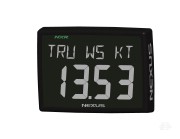 XL20 är specialkonstruerat för att fungera som en del av NXR-serien och kompletterar systemet för båtar från 35 fot och uppåt. Med XL20 ombord täcker NXR hela behovet av instrument.
XL20 är specialkonstruerat för att fungera som en del av NXR-serien och kompletterar systemet för båtar från 35 fot och uppåt. Med XL20 ombord täcker NXR hela behovet av instrument.
NXR har designats för att fungera som “centralt nervsystem” i högpresnatdabåtar och representerar, enligt Nexus själva, det allra bästa inom sitt område. Instrumentet har 45 mm höga siffror, större än hos många konkurrenter. De har hög kontrast och är väldigt lättlästa under alla förhållanden. XL20 finns med valbar röd eller grön bakgrund och är helt programmerbar till navigationssystemets arbetsstation.
Tekniska specifikationer:
Spänning: 10-16V
Strömförbrukning: 8 mA
Dimensioner: 155×133 mm
Vikt: 396 g
Frekvens: 8 Hz
Pris cirka 990 Euro.
Länk: www.nexusmarine.se
Italienska Pershing kommer med en helt ny 108 fots modell försedd med Arnesondrev. För designen svarar Fulvio De Simoni som även har haft Tilli Antonelli, styrelseordförande och grundare av varvet, till sin hjälp för att utveckla helt nya idéer. Pershings tekniker har bland annat jobbat vidare tillsammans med moderbolaget Ferretti S.p.A.’s AYT (Advanced Yacht Technology) för att integrera ytterligare integrera rutornas konstruktion i båtens hela linjeföring.
I standardversionen är Pershing 108 försedd med tre stycken 1815 kW MTU dieselmotorer. De är utrustade med tre Arneson ytskärande propellrar, vilket ger en toppfart på hela 41 knop. Motorerna är centralt placerade i båten för att få maximalt effektiv förbränning och luftförsörjning.
Arnesondrev är spektakulära med sin höga vattenstråle efter båten. De ger också goda prestanda. Båten kan till exempel köra 1 070 Nm vid farten 11 knop. Normal marschfart är annars cirka 23 knop med två motorer.
Utrymmena är rejält tilltagna, vilket de bör vara i en 108-fotare. Den stora cockpiten har plats för tio personer och en täckt avdelning som även kan öppnas upp vid behov.
Interiören är byggd i träslaget “Canaletto valnöt”. Det finns flera olika inredningsalternativ med upp till fem separata kabiner plus utrymme för besättning. Det finns också möjlighet att ta med en 5 m lång jolle på aktern.
Länk: www.pershing-yacht.com
Luleå tingsrätt frikände idag de båda vattenskoterförare som har stått åtalade för att de har kört vattenskoter. Tingsrätten frikände båda de åtalade och tillerkänner dem ersättning av allmänna medel för advokatkostnader med totalt närmare 200 000 kr. Därmed är det tills vidare fritt fram att köra vattenskoter utan risk för att bli rapporterad.
Kustbevakningen (Kbv), som är den myndighet som mest energiskt har tagit på sig att rapportera vattenskoterförare, bör därmed troligen fortsätta på den inslagna linjen att inte rapportera skoterförare.
Svenska Båtunionen med sina 160 000 båtägande medlemmar har hela tiden haft inställningen att det handlar om att utbilda och informera förarna av vattenskotrar i stället för att förbjuda en speciell typ av båt. Dessutom har EU tidigare hävdat att en vattenskoter är en båt och att förbjuda olika typer av båtar är orealistiskt med alla de gränsdragningsproblem detta skulle medföra.
I Norge pågår för tillfället en debatt om att slopa det totalförbud mot vattenskotrar som råder där sedan flera år.
Kommentarer
De blev frikända för att inte länsstyrelsen hade utfärdat några föreskrifter om var det var tillåtet att köra vattenskoter vid tidpunkten då de blev rapporterade. Att då påstå att den domen är lika med att det är "OK att köra vattenskoter" överallt var nog det mest oseriösa och naiva jag hört på länge.
Med lite tur så blir det fortsatt fri åkning men jag som skoterägare hoppas på att folk kan börja köra ansvarsfullt använder själv min skoter som transportmedel då den är snabb bränslesnål o tyst vilket är en klar fördel om man vill göra dagsutflykter i skärgården
Var det någon som trodde något annat än friande dom? Till Herr H. här ovan, det är OK att köra där man får köra "båt". vilket är positivt. Precis som båtunionen menar skall vi istället utbilda och informera båt/vattenskoterförare om våra farvatten och körsätt.
Länstyrelsen får nog se över vattenskoterförordningen en vända till. den är helt uppåt väggarna galen. båt som båt.
inför hellre förarbeviskrav och lägg övriga pengar på att beivra den sjölag som redan finns för båt!
Gurra, du har helt rätt. Information och utbildning är förhoppningsvis lösningen.


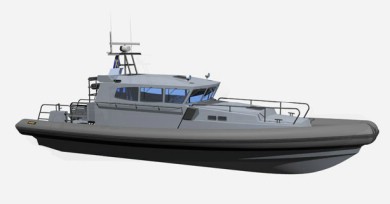

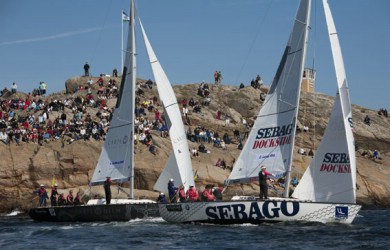



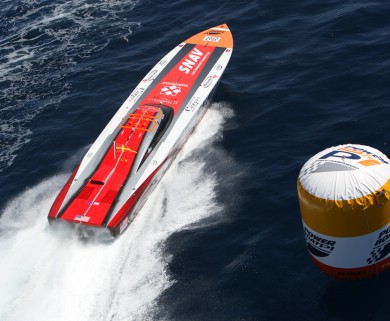
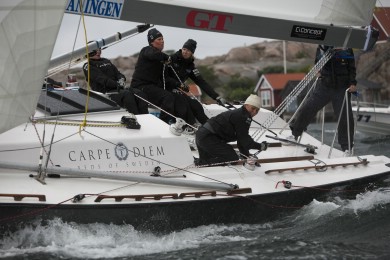

.jpg)
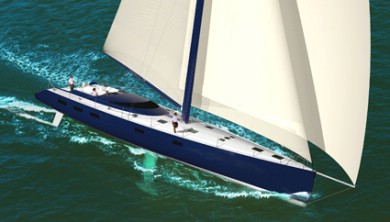
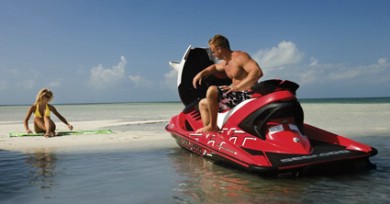

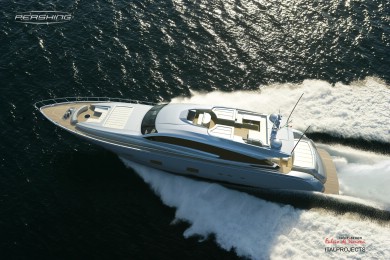
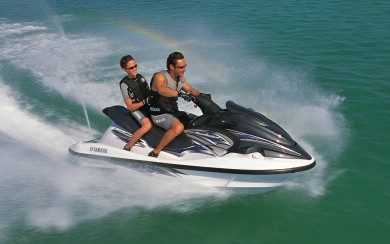
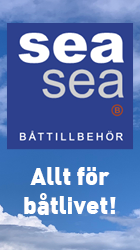
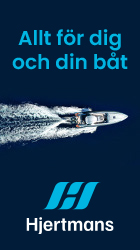
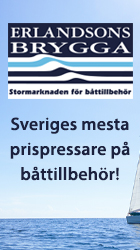

Kommentarer
Joystick